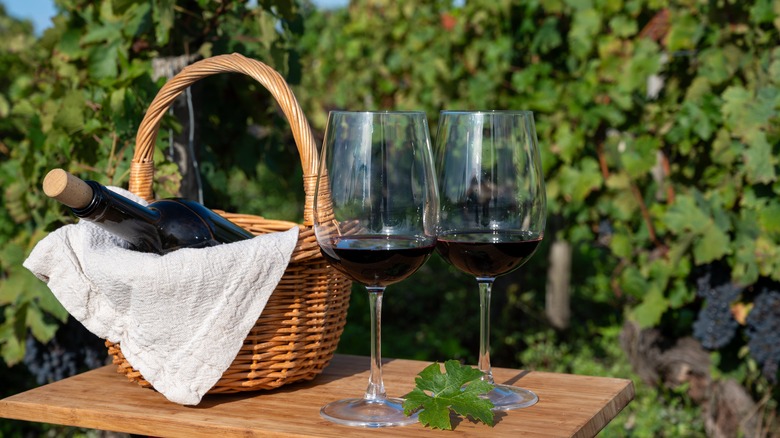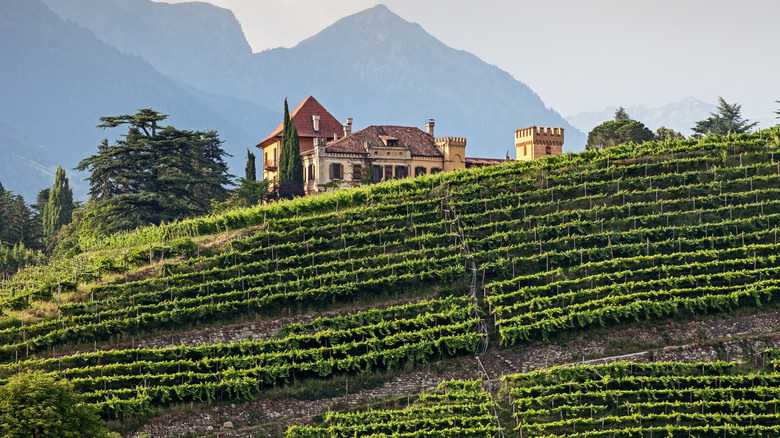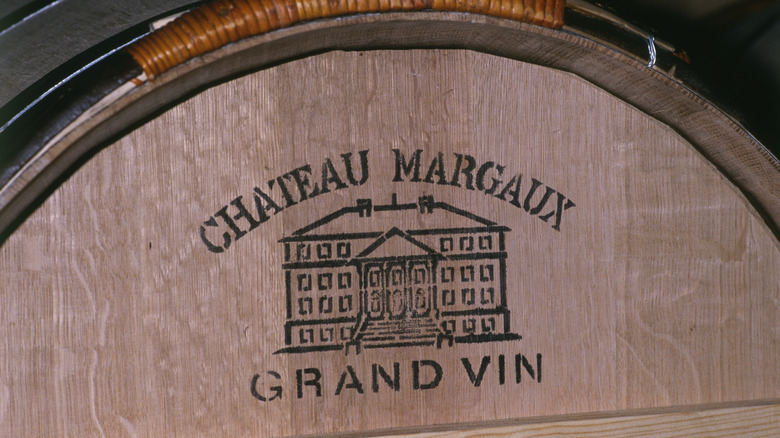The Difference Between A Vineyard And A Winery
When discussing wines and their origins, you'll often come across two terms: "vineyard" and "winery." Even if you aren't big on wine, you've likely seen these words on the labels of your favorite bottles alongside vague terms like "Grand Cru" and "Reserve," accompanied by long, flowery texts about the history and story behind the production. Many people use these terms interchangeably, thinking they refer to the same place where wine is made. However, they're two very different places that occupy different spots in the wine-making process.
Imagine the production process as a map: a wine bottle's journey begins at the vineyard. This is where the essential ingredient — the grapes — are grown. Once the grapes reach the peak of ripeness, they are harvested and transported to the next destination, which is the winery. Here, the freshly plucked grapes undergo pressing, fermentation, aging, and various other processes to transform them into the wine bottles you find at your local wine shop.
Without vineyards and wineries, the wine you enjoy wouldn't exist. Without going too deep into the industry's complexity, here's a short rundown on the relationship between vineyards and wineries.
The main products are different
A vineyard, the word itself is a combination of "vine" (the climbing plants that bear grapes) and "yard," referring to a yard or plot of land dedicated to grape cultivation. Working in a vineyard are farmers (not vintners) whose sole job is to tend to the vines and their fruits. A vineyard's harvest can be used for many different purposes and not just for winemaking alone. It all depends on the kind of grape that's being grown. If the plantation grows table grapes, then the harvest is shipped to supermarkets for immediate consumption as fresh fruits. And if it grows varietals like Cabernet or Merlot, then they're exclusively for winemaking. Both types, though, are called vineyards the same.
Once the grapes are ready, these vineyards ship them off to their partner wineries, where the next phase of the winemaking process takes place. Sometimes, you may find information about the vineyard's origin on the wine label as well.The wineries are where you'll find all the industrial equipment needed to produce wine at scale. There are pressing machines to juice the grapes, fermentation tanks to let the juice stew and produce alcohol, and aging cellars so that the wine can take its time to develop. The end result — after straining and filtering — is wine!
Some places handle both jobs simultaneously
Because of the costs and complexities involved, most vineyards and wineries are separate operations that partner with each other to produce the final product. However, some major brands, known as estate-bottled brands, handle grape cultivation, winemaking, and bottling entirely in-house and on the same tract of land.
According to the U.S Alcohol and Tobacco Tax and Trade Bureau (TTB), for a bottle of wine to be labeled as "estate-bottled," all of the grapes used in the wine must be grown on vineyards controlled by the winery, with the two located in the same viticultural area. The key advantage of estate wines lies in the brand's complete control over the entire production process. That way, the quality of each bottle can remain consistent from one batch to another. Additionally, estate wines have earned a well-deserved reputation for being very high-quality products, with each bottle receiving a special level of care and attention that wines from other brands may not receive.
In exchange for the higher quality, estate wines tend to be very expensive and exclusive. You'd be lucky to find a bottle of Château Margaux for less than $500! However, as any wine enthusiast will tell you, if you have a soft spot for great wine, the investment is well worth it!


